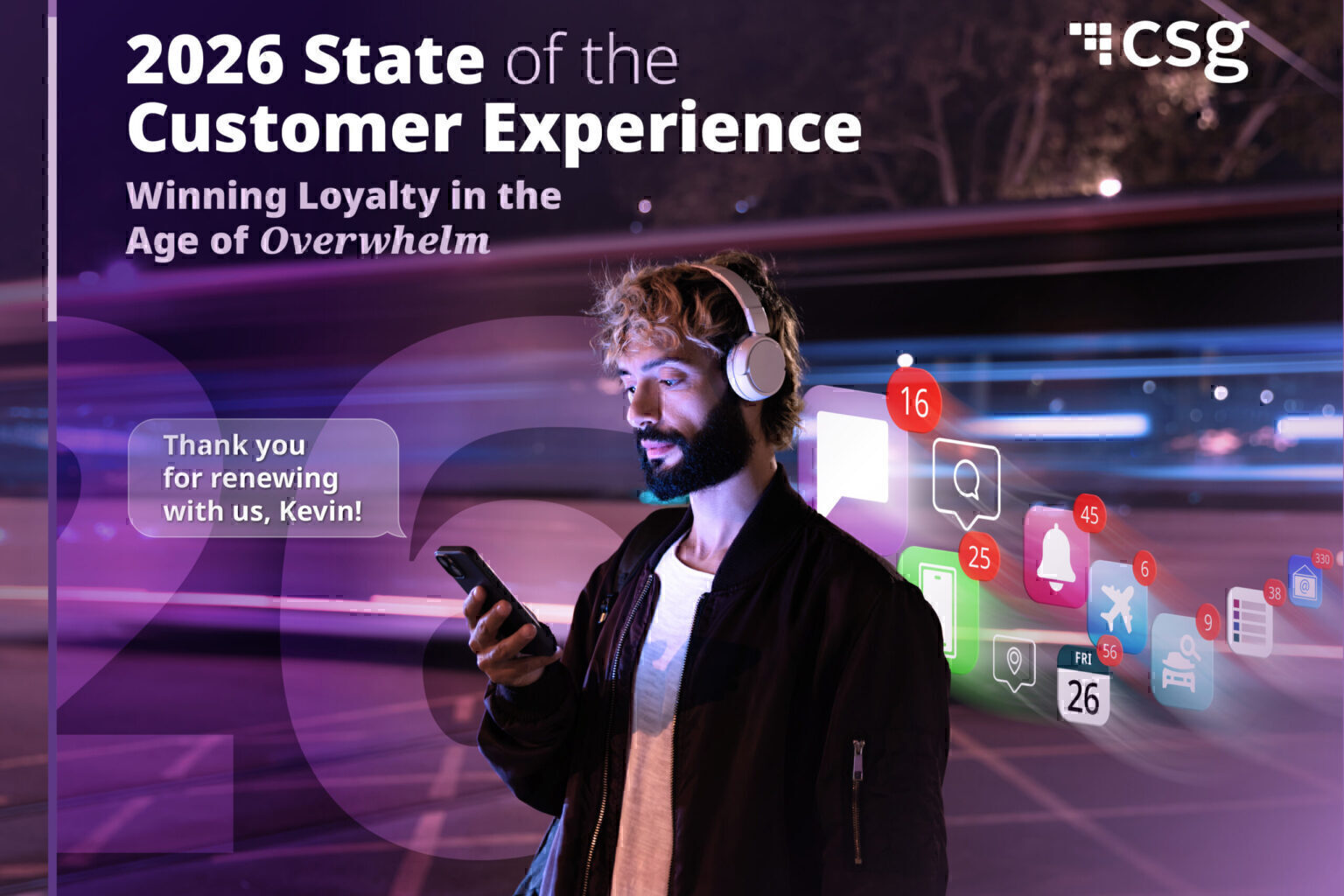“Did my payment go through?”
…a customer says, anxiously waiting for a payment confirmation email…that doesn’t arrive because their email inbox is full. The customer might realize the problem—that they can’t receive any more emails to that account that’s exceeded the email storage limit. Or they might not. Either way, you know what they’re likely to do next to make sure the payment was accepted: call the contact center.
This issue will become more common. Recent changes such as Yahoo’s reduction in free storage highlight a growing challenge: inbox capacity is a barrier to effective customer communication.
The number of daily emails sent and received globally is projected to grow from 361 billion in 2024 to over 424 billion by 2028, with consumer email traffic rising alongside business use. This surge in volume means inboxes fill up faster, especially as more emails include large attachments and rich media.
For brands, this is a reminder to proactively manage email deliverability as part of their broader engagement channel strategy. It’s not a signal to abandon email as a channel, however. I’ll explain why that is, as well as offer best practices for email deliverability in customer communications.
How Inbox Storage Limits Impact Customers
In late August 2025, Yahoo reduced its free email storage limit from 1 TB to 20 GB. Customers who hadn’t cleared out their inboxes (or opted for a paid storage tier) won’t be able to receive or send new emails from those accounts until they do. While Gmail’s 15 GB free storage limit remains unchanged, it applies across Google Drive, Photos, and Gmail—meaning users must actively manage their storage to avoid missing important messages. And it’s notably less capacity than Yahoo’s new 20 GB cap on free storage.
When inboxes reach capacity, the consequences go beyond missed messages.
Customers can…
Miss important transactional messages and suffer the consequences
Emails containing billing statements, order confirmations, reminders and other updates won’t arrive when inboxes are full. Customers may wind up missing appointments, paying late fees or experiencing service disruptions.
Accidentally delete important messages
Customers scrambling to free up storage space may quickly delete brand messages without determining whether they’re promotional or transactional. According to new research, 59% of consumers have accidentally deleted an important alert (such as an invoice or payment reminder) because they thought it was a marketing message.
Experience more stress
With inboxes filling up faster than ever, customers may worry that important messages might not reach them. Almost two thirds (65%) of customers worry they’ll miss important messages because they ignore brand communications. Ignoring messages (without deleting them) can lead to a full inbox and soft bounces, preventing vital communications from being delivered.
Lose trust in your brand
Customers expect every interaction to be effortless, whether they’re logging in, checking out, or seeking support later. When an email for a one-time passcode, password reset, or security alert doesn’t arrive promptly (or at all), trust slips—and loyalty can follow.
How Inbox Storage Limits Impact Businesses
The email storage squeeze can have ripple effects for a business’ customer communications strategy, too.
On the brand side, email delivery failures can lead to…
Increased customer care costs
Communication failures can lead to higher contact center call volumes as customers call to check the status of their order, delivery, or payment. For businesses, every undelivered message can mean additional time and resources spent resolving customer concerns that were supposed to be resolved with reliable communication.
Weakened promotional campaigns
Full inboxes result in soft bounces (temporary delivery failures), negatively impacting sender reputation scores. While soft bounces don’t affect sender reputation scores as much as hard bounces, too many soft bounces can become the functional equivalent of a hard bounce. Email service providers may permanently remove addresses that repeatedly soft bounce from the active mailing list.
Email Is Still an Essential Channel
Email plays a vital role in customer communications, so it’s worth addressing this deliverability challenge rather than de-prioritizing the channel altogether.
Email is…
Preferred by many consumers for regular brand communications
The 2026 State of the Customer Experience found that 73% of consumers prefer to receive brand messages via email when they’re weekly or more frequent. Considerably fewer respondents want to get messages via text (31%) or in-app notifications (23%). The best strategy is to use customer journey analytics to determine what channel is best for each customer for each communication.
A source of essential documentation
Email creates a searchable, verifiable record of correspondence for both the customer and the business. That’s critical for customer service, compliance and legal purposes, particularly in highly regulated industries like financial services.
Effective at every stage of the customer lifecycle
Email marketing campaigns build brand awareness (e.g., newsletters) and drive consumer engagement through personalized offers, abandoned cart recovery, and free trial expiration alerts that boost conversions. After a purchase, email remains essential for a whole host of communications, including:
- Order confirmations
- Shipping/delivery updates
- Appointment reminders, including instructions
- Payment reminders and confirmations
Detailed support and case updates
- Product recall notifications, with instructions
- Status of loan applications or insurance claims
- Planned service outages and resolution updates
Loyalty and retention communications
- Proactive retention offers (discounts, upgrades, freebies)
- Reengagement emails
- Win back offers
The bottom line: Brands still need email, but they can’t afford to put all their eggs in one basket—even as email deliverability is a growing challenge.
What’s the solution?
Six Best Practices for Omnichannel Engagement and Better Deliverability
Brands might be tempted to cover their bases by blasting communications across multiple channels. This can backfire, causing customers to tune out messages or unsubscribe. Sending too many appointment reminders via text, phone, and email is likely to annoy customers—not support them. More than two-thirds of consumers already agree they receive so many brand messages, they “don’t care what brands are saying anymore.”
In this environment of message saturation, omnichannel communication needs to be more targeted to be effective. Here are some ways brands can achieve a balanced approach with email in the mix.
1. Diversify engagement channels. Don’t rely solely on email—use SMS, push notifications, and in-app messaging for transactional updates and time-sensitive alerts. An intelligent-decisioning engine can automatically switch channels based on deliverability signals and customer preferences.
2. Prioritize transactional messages over promotional ones. Identify and segment transactional communications (e.g., order confirmations, payment alerts, account updates), ensuring these critical messages are delivered first and reliably reach the inbox.
3. Use a separate, dedicated IP address and subdomain for transactional and security-critical messages. Isolate urgent communications from promotional traffic to improve sender reputation and reduce the risk of important messages being filtered as spam.
4. Optimize for relevance. Implement an email sunset policy to suppress marketing emails to recipients who haven’t engaged in six months. Use engagement data to trigger targeted re-engagement campaigns before removing inactive contacts, keeping your lists healthy and your sender reputation strong.
5. Integrate email with your omnichannel engagement strategy. Orchestrate communications across email, SMS, push and in-app messaging to boost engagement and relevance scores. For example, prompt customers to confirm a text opt-in via email, or follow up a failed email with a secure SMS.
6. Leverage analytics to continuously improve. Track key metrics like open rates, bounce rates, engagement by channel, and conversion outcomes. Use these insights to refine your channel strategy and maximize deliverability and engagement.
Navigating Email Deliverability with CSG Xponent
Email deliverability doesn’t have to be a guessing game. With CSG Xponent, brands gain the clarity and control needed to ensure every message reaches its destination, no matter the channel or challenge.
Xponent’s intelligent decisioning engine continuously monitors deliverability signals in real time, automatically adjusting how and where messages are sent. If an inbox is full or a message bounces, Xponent seamlessly reroutes communications to alternative channels like SMS, outbound voice, or in-app messaging. You keep the conversation going and customers informed.
But it’s not just about avoiding missed messages. Xponent empowers brands to prioritize critical communications, optimize relevance, and orchestrate engagement across every touchpoint. With actionable analytics and dynamic journey management, teams can refine their strategies, respond to changing customer behaviors, and deliver experiences that build trust and loyalty.
Deliver Real Omnichannel Engagement Today
CSG helps brands orchestrate messages across digital and print channels, ensuring every customer receives the right information, in the right format, at the right time.













